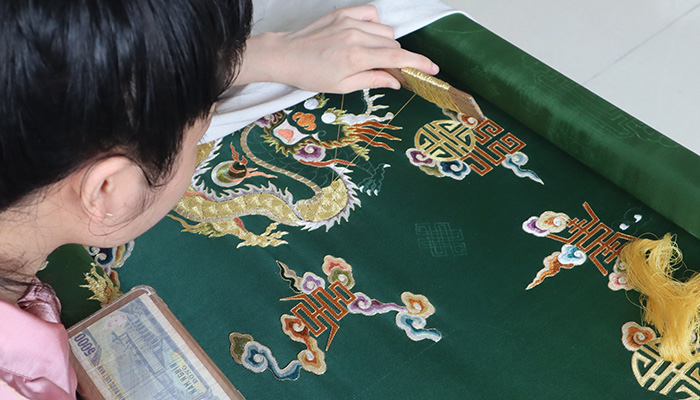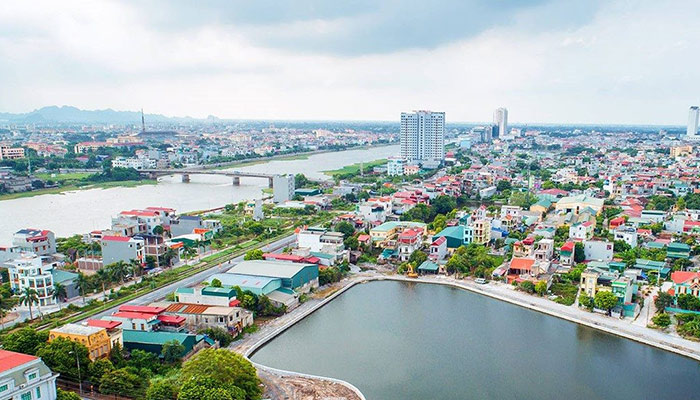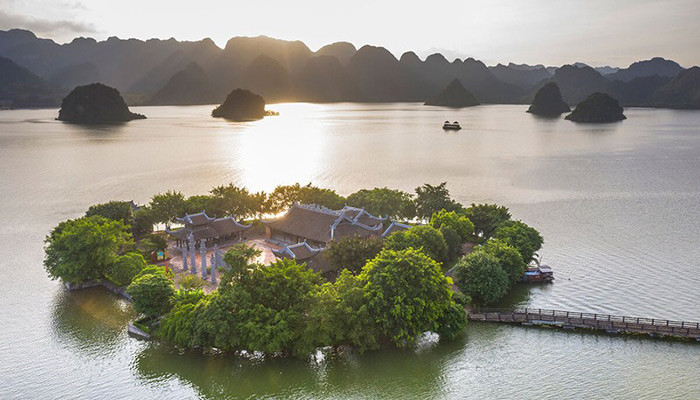The Highlights of the Ha Nam Travel Journey
Lying approximately 60km south of the capital Hanoi, Ha Nam is blessed by nature with numerous exquisite landscapes. In addition, Ha Nam is renowned for its sacred temples and pagodas, as well as ancient traditional craft villages that hold significant historical and cultural values. Consequently, Ha Nam is gradually becoming a shining tourism destination on the Vietnamese tourism map, attracting thousands of visitors for exploration and discovery every year.

Alongside its advantageous location and convenient transportation as it lies on the vital North-South transport route, encompassing a network of roads, railways, and waterways, Ha Nam also possesses a rich, diverse, and distinctive natural tourism resource. The dense river system, including the Red River, Day River, Chau-Nui Doi River, along with the agricultural ecosystem of the lowland region, represents unique features of this land. The diverse topography of Ha Nam contributes to the creation of spectacular landscapes, with renowned sights such as Tam Chuc Lake, Truc Pagoda - Ngu Dong Thi Son, Luon Cave, Doi Cave, Bat Canh Mountain, and more. Among them, Tam Chuc Tourism Area stands out, often dubbed as the 'Halong Bay on land' in Ha Nam. This destination has been identified as a 'lever' to boost the province's tourism growth, and significant investments have been made to construct a masterpiece of Buddhist architecture in Vietnam. The Tam Chuc Pagoda complex represents a harmonious blend of the past and present, Eastern and Western cultures, built upon the foundation of Buddhism. The leadership of Ha Nam province emphasizes the development of the Tam Chuc National Tourism Area in a green, sustainable manner, focusing on environmental protection. Consequently, the entire natural area is preserved, including protective forests, primeval forests, rocky mountain areas, and white - cheeked crested gibbons. In 2013, the Tam Chuc Pagoda complex was officially recognized by the Prime Minister as a key national tourist area. Together with Hanoi's Perfume Pagoda and Ninh Binh's Bai Dinh Pagoda, Tam Chuc Pagoda forms the 'golden triangle' of spiritual tourism, contributing to connecting the cultural and spiritual heritage.

Alongside the Tam Chuc Tourism Area, Dia Tang Phi Lai Pagoda is gradually becoming an attractive spiritual tourism destination in Ha Nam. This thousand - year - old pagoda contributes to elevating the provincial tourism position with its tranquil and serene beauty. Moreover, the pagoda preserves many historical imprints from the Ly - Tran dynasties, such as patterned bricks and tiles with lotus motifs, dragon motifs, Garuda bird motifs, phoenix motifs, all of significant value.
Another notable highlight in the Ha Nam tourism landscape is the rich cultural and humanistic resources. Although Ha Nam may not have a plethora of historical relics, those it does possess are outstanding, such as the Tran Thuong Temple, Lanh Giang Temple, Long Doi Son Pagoda, Truc Pagoda, and a system of unique festivals like the Tich Dien Festival, Tran Thuong Temple Festival, Lieu Doi Martial Arts Festival, etc. Additionally, traditional craft villages leave a strong impression on visitors, such as the silk weaving in Nha Xa, Vọc wine, Ngoc Dong bamboo weaving, Thanh Ha lace embroidery, Vụ Đại fish sauce, Chều rice paper cake village, and more.

Furthermore, Ha Nam boasts many precious tangible cultural heritages such as the Ngoc Lu Bronze Drum, the Bac Ly Bronze Book, the 'Sung Thien Dien Linh' stele, the 'Dai Tri' stele, etc. These tangible cultural heritages, combined with the diverse intangible cultural heritages, have laid the important foundation for the development of the 'smoke - free industry' in Ha Nam.
Particularly, Ha Nam is known as the land of talents with famous figures in the national history such as Tam Nguyen Yen Do Nguyen Khuyen, writer Nam Cao, etc. Therefore, tourist destinations like Ba Kien's house, the memorial area for the martyred writer Nam Cao, Nguyen Khuyen Street, Ba Danh Pagoda, Kem Trong, etc., are must - visit places for poetry and literature enthusiasts.

In order to further develop the tourism industry in the province, the provincial leadership has been implementing various policies to promote the sector's growth. Specifically, these efforts include attracting investors, especially those with capabilities, credibility, and established brands. They aim to leverage the strength of the local community in developing commerce and services while preserving and promoting cultural values, building a civilized urban lifestyle, maintaining landscapes, and protecting the environment. The province invests in communication, promotion, and advertising through various media and online platforms. Additionally, there is a focus on collaborating with national key tourist destinations to explore and organize new and attractive tour packages.
Simultaneously, Ha Nam is also investing in the construction of many high - end restaurants, hotels, entertainment facilities, and unique cultural, artistic, and street food activities. It can be said that with the existing strengths and the determination of the political system and the people in the province, Ha Nam promises to become a shining star on the Vietnamese tourism map in the near future.










